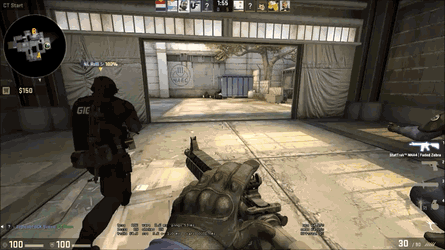These are the terms that are commonly used in the CS:GO cheating community:
P2C - Cheat software that requires the user to pay for it.
Paste- Cheats that use code which isn’t written by them. However most of them behave quite bad and the chances of getting detected by anti-cheat software are very high. Also some scammers would use them as a base to scam people. However people also use this term in order to insult a cheat provider.
Crack - Cheats that used to be paid but now being accessible for free because of a vulnerability found in their security.
Config - The configuration for the cheat. Most of the cheats in CS:GO provide a lot of features for the user to set up. A configuration file allows the user to load up pre-configurated settings to the cheat, reduces the time to set up the cheat all over again.
Lua/js - Some cheat providers also allow their community to create some scripts in order to let the cheat behave how the user-wanted. This could allow the user to make the cheat more flexible.
Cheating styles
Closet - Cheaters who tries to hide up their cheat to a maximum level in order to not get called out from other people. Mostly they will only turn on a few features, such as only toggle up a little bit of aim-assist, or a high smooth value of legit aimbot, sometimes they will also toggle up airstrafe and auto bunnyhop.
Legit - Which is similar to a closet cheater, who tries to play like a normal player. However the difference with closet cheaters are they will turn on more features compared to closet cheaters, such as ESP.
Rage - Cheaters will turn on most of the features that the cheat has available in order to win a match by any cost, such as Anti-Aim, rage aimbot, esp, etc. Mostly they will receive a ban in a day or in a week, depends on how long overwatch takes or the cheat gets detected by the anti-cheat software.
In game
HvH - A short term for “Hack-versus-Hack”.
Legit HvH - Simlar to HvH, but in this case, the cheater on both sides will only toggle their blatant configuration, since they don’t want to have the risk of a ban (Despite the chances of getting banned on legit HvH are very high). Mostly seen on non-prime or prime MM.
P / p100 -A term to represent something is very good, near perfection. For example, when a cheater typed “hitting p” in chat, this means his ragebot always hits the target, running nearly perfect. Or when some cheater says “p media”, which means this is some excellent sources to be used in a video / photo etc…
1 - Killing the enemy with one shot.
Baim - Stands for “Body-aim”.
Sliding - When a cheater toggles side walk, other players will see the legs of the cheater’s playermodel become frozen, looks like sliding.

Community
Trashtalking - Mostly happens during a HvH or before a HvH match. In order to make another cheater become angry and may toggle his rage cheat configuration.
NN -Short term for “No-namer”. Which stands for a cheater that nobody knows him. Mostly used as an insult to another cheater.
Big namer- Big namer is someone who is famous in the HvH community, which usually is someone good at HvH and posts media on different social media platforms regularly.
uff ja - “Yes” in german.
hhhh - Ha ha ha ha.
laff - A HvH slang stands for laugh.
who ru - A HvH slang represents “who are you”.
ks omk - Arabic swear word, literal meaning is “your mothers va-ina”. One of the strongest and harshest swear words in arabic language, anyone will get triggered by it.
hdf - German swear word, meaning “Halt die Fresse” which translates to “Shut the f*ck up”.
Source: https://matt12945.gitbook.io/csgo-subreddit/introduction/terminology-of-csgo-cheating#:~:text=HvH%20-%20A%20short%20term%20for,order%20to%20win%20the%20match
THANKS FOR READING, HOPE U LIKE




